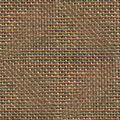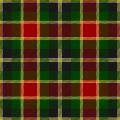Organdy

Organdy or Organdie[1] is a kind of sheer fabric. It is a lightweight balanced plain weave cotton with features of sheerness and crispness.[2][3]
Characteristics[]
Organdy is a stiffened material; sheerest among its peers, such as lawn cloth and Batiste. Moreover, they all have the same "grey goods." They are different from each other in how they are finished. Organdy's sheerness and crispness are attributed to the acid finish (parchmentising) where as the lawn is finished with starch or resin, and Batiste was a softer kind of fabric type.[4][1]
Variations[]
Figured Organdy is a variation of Organdy produced by applying an acid-resisting substance to a localised area.[4]Superior types of Organdy are made with combed yarns of finer counts and higher twist.[1]
Process[]
Organdy is an acid stiffened cloth. Its sheerness and crispness is the result of an acid finish, where the fabric is treated with sulfuric acid solution for a short period and then neutralized to remove excessive acid. The process is named "parchmentising". The parchmentization is a treatment of acid on cellulosic textiles in the pursuit of obtaining the characteristic of the parchment.The finish offers a stiffened and translucent finish.[5] Figured Organdy is produced by applying an acid-resisting substance to a localised area; on the contrary, immersing it completely makes it stiffen all over. The objective of all-over parchmentizing is to create a transparent cloth.[4]
Use[]
Organdy was used for bridal dresses, ladies party dresses, and blouses. Organdy was a useful material as a Casement cloth, sheers, and lining etc.[1] In the old days (late 19th and 20th century), young girls used to wear dresses made of organdy.[6] Because the material had a wrinkling tendency due to stiffened properties, handkerchiefs and child clothing were not chosen.[4]
See also[]
References[]
- ^ a b c d Humphries, Mary (1996). Fabric reference. Internet Archive. Upper Saddle River, N.J. : Prentice Hall. pp. 169, 5, 7. ISBN 978-0-13-349671-0.
- ^ Elsasser, Virginia Hencken (2005). Textiles : concepts and principles. Internet Archive. New York, NY : Fairchild Publications. pp. 126, 225. ISBN 978-1-56367-300-9.
- ^ Le Van, Marthe (2009). Stitched Jewels: Jewelry That's Sewn, Stuffed, Gathered & Frayed, p. 10. Sterling Publishing Co., Inc.
- ^ a b c d Hollen, Norma R.; Saddler, Jane (1968). Textiles. Internet Archive. New York, Macmillan. pp. 139, 140, 189.
- ^ Joseph, Marjory L. (1992). Joseph's introductory textile science. Internet Archive. Fort Worth : Harcourt Brace Jovanovich College Publishers. p. 343. ISBN 978-0-03-050723-6.
- ^ Dolan, Maryanne (1987). Vintage clothing, 1880-1960 : identification & value guide. Internet Archive. Florence, Ala. : Books Americana. p. 99. ISBN 978-0-89689-063-3.
Sources[]
- (2006). Fairchild's Dictionary of Textiles 7th Edition. Fairchild. p. 396. ISBN 0-87005-707-3.
- Woven fabrics
- Textile stubs


